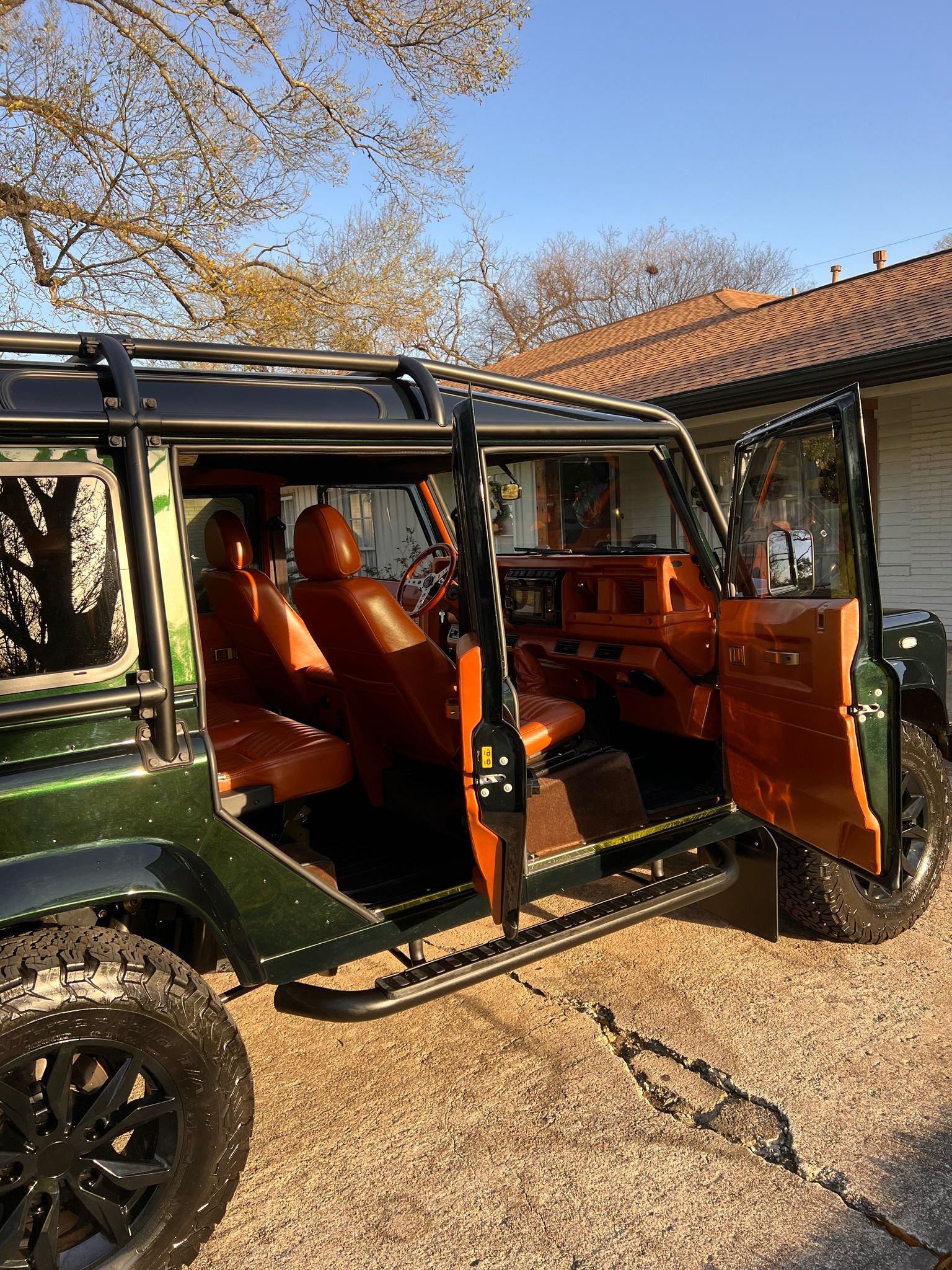The Land Rover Defender is iconic for its unmatched off-road capabilities, from sandy dunes to rocky mountain paths. Whether you’re planning a weekend adventure or tackling rugged trails, preparing your Land Rover Defender for diverse terrains is key to ensuring a safe and thrilling journey.
This guide will walk you through the essential preparations and modifications to equip your Defender for various landscapes. We’ll also discuss crucial tools, techniques, and enhancements to maximize performance.
Understanding Your Terrain: The First Step in Off-Roading
Before setting out on any adventure, it’s important to assess the type of terrain you’ll be navigating. Your Defender’s performance and the preparation it requires will differ based on whether you’re tackling rocky surfaces, muddy trails, sand dunes, or snow. Research your route, examine the terrain, and tailor your preparations accordingly.
For instance, the way you adjust your tire pressure, the tools you pack, and the modifications you make will vary greatly between driving on sand versus rock. Understanding these differences is the first step toward success.
If you’re new to off-roading, take a look at our Off-Road Mastery: Seafoam’s Terrain Expertise for more insights into terrain exploration. Also, check out our detailed guide on What to Look Out For When Buying a Defender to ensure you pick the best model suited for your adventures.
Essential Preparation Tips for Different Terrains
1. Tire Pressure and Selection
Tire pressure plays a critical role in off-road performance. For sandy environments, deflating the tires allows them to spread and glide over soft ground, preventing the vehicle from sinking. In contrast, rocky trails require higher tire pressure for grip and to avoid punctures.
- Sandy Terrain: Lower tire pressure between 15-20 psi.
- Rocky Terrain: Moderate to high pressure for better traction and puncture resistance (30-35 psi).
Selecting the right tires is just as important. All-terrain (AT) or mud-terrain (MT) tires are well-suited for rough environments, providing superior grip and durability. Ensure your Defender is equipped with tires that match the demands of the trip. For more on tire choices, explore our in-depth article on What is the Best Land Rover Defender Engine?.
2. Planning Your Route
Planning ahead is essential for navigating different terrains. Whether it’s a short trip or a multi-day trek, understanding the route will allow you to prepare your Defender for potential challenges.
For example, if you’re driving through muddy trails, you’ll need to maintain consistent speed to avoid getting bogged down. Rocky paths, on the other hand, require slower speeds and careful wheel placement to prevent damage.
Make use of online resources like terrain maps and weather forecasts to anticipate what to expect, and always keep an eye on upcoming conditions.
3. Inspection and Maintenance
Before venturing into the wild, conduct a thorough inspection of your Defender. Key systems such as the suspension, brakes, and steering must be in peak condition to handle the rigors of off-roading.
Check all fluid levels, including engine oil, coolant, brake fluid, and differential oil. Any leaks or worn components should be repaired before hitting the trails.
Also, ensure you have recovery gear like tow straps, a winch, and a tire repair kit. For a complete guide on maintaining your vehicle, refer to our Essential Tips for Maintaining Your Land Rover Defender.
Terrain-Specific Driving Techniques
The type of terrain you face determines the driving techniques you should use:
- Sand: Keep steady momentum and avoid sharp turns. Lowering tire pressure helps to prevent the vehicle from getting stuck.
- Mud: Drive in lower gears to maintain a consistent speed. Mud terrains can be unpredictable, so make sure you avoid sudden stops.
- Rocky Terrain: Drive slowly and carefully, focusing on precise tire placement to avoid scraping the undercarriage or damaging critical components.
- Snow/Ice: Use low gears and gentle acceleration. Reducing tire pressure may improve grip, but ensure you have snow chains if conditions are severe.
For beginners, practicing in controlled environments is essential before tackling challenging terrains.
Modifications for Enhanced Off-Road Capabilities
1. Suspension Upgrades
A high-quality suspension system is crucial for improving your Defender’s ground clearance and wheel articulation. Upgrading the suspension will enhance your ability to navigate obstacles, ensuring a smoother and safer ride on rough terrain.
Consider adding long-travel shock absorbers, which allow the wheels to flex more, improving traction on uneven ground. Check out our Land Rover Defender Restoration Specialists page to learn more about custom Defender modifications.
2. Underbody Protection
When off-roading, rocks and debris can cause serious damage to the underside of your vehicle. Installing skid plates, differential guards, and fuel tank protectors can prevent costly damage. These modifications will allow you to tackle even the roughest trails without concern for puncturing your fuel tank or damaging other critical components.
3. Roof Rack and Storage Solutions
If your adventure requires extended trips or additional gear, a roof rack will expand your storage capabilities. Keep in mind that overloading the roof can affect your Defender’s balance, especially on steep inclines or side slopes. Secure heavier items within the cargo area to maintain a low center of gravity.
For ideas on extended trips, check out our Project Lowlands D130 and see how we’ve customized this Defender for more rugged terrains.
Packing the Essentials: Tools and Gear for Off-Roading
Packing the right gear is crucial when heading into unpredictable landscapes. A tire repair kit, traction boards, tow straps, and a portable air compressor are essential for off-roading. Additionally, pack extra fuel, food, and water if you’re venturing into remote areas.
Tools like a shovel and hi-lift jack are lifesavers when dealing with sand or mud. Traction boards can give you the necessary grip to escape when you’re stuck, and a winch ensures you can pull your vehicle out of tough spots.
For more about preparing for your off-road journeys, our Our Restoration Process details how to equip your Defender for extreme conditions.
Key Terrain Preparation Tips
| Terrain | Tire Pressure | Driving Technique | Modifications |
|---|---|---|---|
| Sand | 15-20 psi | Steady momentum, avoid sharp turns | All-terrain tires, traction boards |
| Rocky Terrain | 30-35 psi | Slow, careful wheel placement | Skid plates, suspension upgrades |
| Mud | 25-30 psi | Consistent speed, low gears | Mud-terrain tires, recovery gear |
| Snow/Ice | 25-30 psi | Low gears, gentle acceleration | Snow chains, traction boards |
Ready for Your Adventure? Contact Us Today!
Whether you’re preparing your Defender for the desert dunes or rocky mountains, Royal Street Rovers specializes in customizing and restoring Defenders for every challenge. From suspension upgrades to underbody protection, we ensure your vehicle is equipped for every terrain.
Explore our Defender Listings to find your next adventure companion or Contact Us for expert advice on prepping your Land Rover Defender.
Don’t forget to check out our Project Seafoam to see a classic Defender in action on challenging terrains!
By preparing your Land Rover Defender correctly and customizing it for different terrains, you’ll enjoy every off-road adventure safely and confidently. For more tips, explore Why the Land Rover Defender is the Ideal Daily Driver and start your next journey with Royal Street Rovers!




